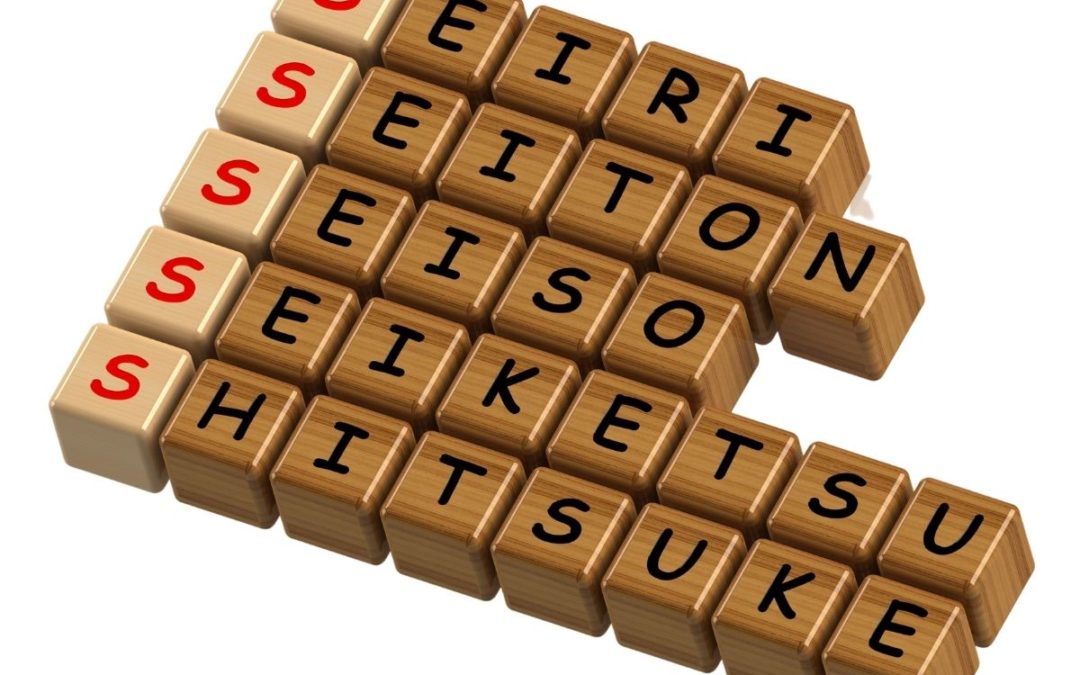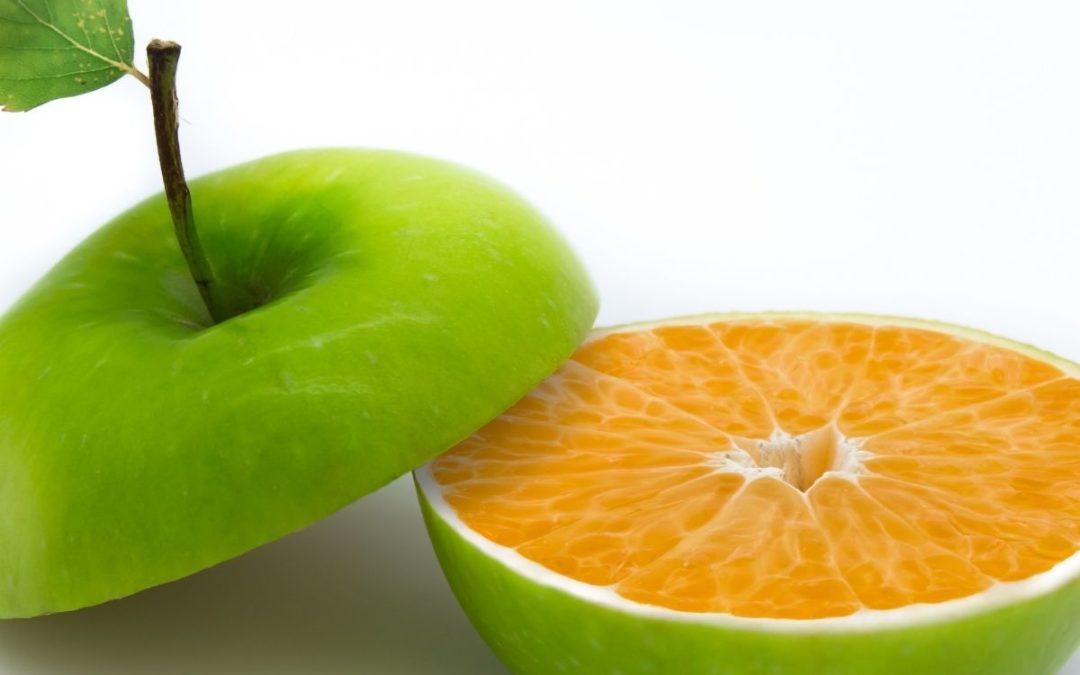
by ifs_admin | Co-Packing
Secondary packaging can be utilized in all sorts of industries, including pharmaceutical packaging. Different products that go through secondary packaging require their process, whether it’s food or cosmetics. Pharmaceutical packaging is no exception and could be even stricter. Because it is dealing with a thing as delicate as medication, special considerations and measures have to be taken. There are laws and structures set down by the FDA to make sure that these products are packaged properly. Secondary packaging is the best way to make sure that pharmaceuticals arrive safely to the masses.
The top priority for pharmaceutical packaging is safety. This form of secondary packaging changes depending on what kind of pharmaceuticals are being packaged. For example, a vile of insulin would come with different safety measures than that of a medication that comes in a blister pack. Ensuring that the right pharmaceutical packaging practices are being put in place is paramount to a job well done.
The active agents in medications and drugs are highly sensitive to all kinds of outside elements. These elements can cause a degradation in exposed pharmaceuticals which can then impact the efficacy of the product. Simple things like light, climate, and oxygen can do a world of damage to even the most common of pharmaceuticals. Secondary packaging provides barriers from these and other factors to keep the product, and its users, safe. Without proper secondary packaging, we could not be guaranteed the safety of vital medications.
In addition to keeping pharmaceuticals safe on shelves and in transit, secondary packaging keeps them sterile. Potency is one thing, contamination is another. A thick layer of plastic or a specialized cap will do wonders for keeping pharmaceuticals away from external contaminants. While those extra layers of pharmaceutical packaging may seem annoying at the moment—the plastic wrap on the child-proof cap, the aluminum seal, the wad of cotton, etc—they are what keep the medications we rely on safe to use.
Durable packaging is a key part of pharmaceutical packaging safety, but it’s not the only thing. Accountability and transparency have their safety values. Secondary packaging entities, like IFS, take careful notes on who has touched what and when on the supply line. This kind of visibility keeps products and people safe. If something goes wrong, knowing where the problem began is the only way to correct things and keep it from happening again. Secondary packaging ensures and documents that products are being handled safely and properly.
The pharmaceutical industry caters to millions of people worldwide. It’s nearly impossible to find a household that doesn’t have at least one pharmaceutical in it, no matter its purpose. Without secondary packaging, it would be impossible to know if the medications you’re taking are sterile and at a dosage that corresponds to the label. When you open a new bottle of pain relievers or uncap an over-the-counter remedy you want to be certain that you are the first person to open it.
Secondary packaging for pharmaceuticals is the last line of defense. The measures that are taken in pharmaceutical packaging are done to keep consumers all over the world safe.
To learn more about our contract packaging services, speak to a specialist!
#impactfs #supplychain #copacking #impactyourbrand

by Angela Mendes | Co-Packing
As we have discussed, in the world of contract packaging there is a need for constant improvement. These improvements can come by way of safety, organization, or standard shifts. When it comes to implementing these improvements we recommend starting with 5S.
Understanding 5S in Contract Packaging
The 5S’s are a group of five Japanese words that are part of an ideology of improvement. Each word has its own definition and role in the grander scheme of your business. These structures are applied to workspaces, inventories, and any day-to-day activity that needs polishing.
- Seiri (sort)
Think of this as the decluttering aspect of the 5S’s. When you sort through your tools, you will decide which necessary tools can be removed altogether. This can be done with steps in a project as well. - Seiton (set in order)
Once you have decided what you need, arrange everything as it needs to be beforehand. This kind of preparedness is a big-time saver in contract packaging, specifically. - Seiso (shine)
Seiso is also referred to as cleanliness. Having a clean workspace has its own set of perks. A clean workspace will make for fewer mistakes, potentially harmful work staff accidents, and even ramp up productivity. - Seiketsu (standardize)
Maintain the first three S’s every day to achieve Seiketsu. This will ensure that everything goes accordingly every day, as long as it’s the standard. - Shitsuke (sustain)
The final step is to sustain S’s one through four. This will help you and your employees form a habit. Forming habits, good habits at that, is the only way to sustain a business. Using the 5S’s will help you get to a more streamlined workflow.
Implementing the 5S’s
The benefits of putting the 5S’s to work in your contract packaging practices are extensive. If you have a neater, or shinier, workspace it becomes safer and easier to navigate. You won’t have to waste time tracking down tools because they will all be sorted in their exact place every time. Instructions and procedures will be second nature to all staff because they will have been standardized.
To learn more about our contract packaging services, speak to a specialist!
#impactfs #supplychain #copacking #impactyourbrand

by Angela Mendes | Co-Packing
The business world is always changing, so continuous improvements are essential. For the contract packaging industry, there are a lot of plates spinning all at once. A co-packing center has to be a well-oiled machine. In order to keep things going, changes must be made to optimize things like safety, space, and speed.
There are easy ways to make simple but effective improvements in co-packing methods. It doesn’t have to be a complete overhaul, changes can be as minor as deemed fit. The implementation of continuous improvement will result in benefits across the board.
Where to Start
Change can be a big undertaking. Continuous improvement can be boiled down to just a few simple steps. It isn’t all that common for core changes to be made. At the end of the day, it all boils down to managing a few key things. Each step feeds into the next to create a cycle of continuous improvement.
These following tweaks will fine-tune the entire co-packing process and benefit both the company and the client.
There are always improvements to be made, some more obvious than others. You should always be analyzing your systems and processes. Whether big or small, looking for ways to improve is the responsible thing to do. Putting things like strict organization, clean-up, and habit forming into action can be done quickly with unlimited advantages.
Organization and 5S
Nothing turns an operation around like organization and visual systems. Making sure that everything has a place will drastically improve how things work. Organization includes setting up procedures and methods that will streamline all processes.
Whether it’s keeping the facility’s tools in order or having shadow boards up in the facilities, organization should take top priority.
Clean-Up
Keeping the work area clean and orderly will improve productivity and reduce accidents. A neat facility cuts down on missteps and accidents that could cause problems and cost money.
If excess materials are left out on the floor that could cause employee accidents or line shutdowns. Maintaining a workspace that looks tidy will improve efficiency and keep the product and employees safe.
Habit-Forming
The more diligent companies become with putting these particular procedures in place, the easier it will all become. Forming a habit requires a certain amount of discipline. Workers and management alike have to be willing to go through the steps every time, not just through the motions. If there is a commitment to what needs to be done companies will end up with improved operations and a more sustainable strategy. The key here is to engage everyone in the process so they will buy into the value continuous improvement will bring to customers and to them personally.
Delivering Value
Now that the basic steps are in place, you can embark on your continuous improvement journey. The journey can begin with simply standing on the production or warehouse floor and looking for waste. Waste can mean many things but in sum, it simply means movement or activity that occurs, that does not deliver value to the product or service. For example, if a person must walk through isles to look for inventory that was not put away properly, the effort consumed looking for the inventory is waste. Another form of waste would be a slow process that bottlenecks another process so employees are waiting for work. Whatever the challenge may be, there is likely a better and faster way to deliver the end result. Co-packers will invest in engineers or continuous improvement specialists to do Line Balancing. This means that the work is looked at and balanced to ensure a proper and fast flow of work.
The value created by focusing on the flow of work is the work gets done faster and more work can get done. This results in customer satisfaction, because of their ability to scale and shareholder satisfaction because it costs less money to produce more work. The added benefit is that employees enjoy their work because it is productive and not burdensome.
To learn more about our contract packaging, speak to a specialist!
#impactfs #supplychain #copacking #impactyourbrand

by ifs_admin | Co-Packing
There are layers when it comes to co-packing—primary and secondary packaging. Different products and businesses will have different packaging needs. Just the same, some co-packers only deal in one or the other. Primary packaging is the first step for everything on any shelf, secondary packaging is a more specific process with safety in mind.
Primary Packaging
Primary packaging is the first thing that happens after the product is complete. It is the box the dog treats come in, the tube that holds the mascara. Primary packaging is what the consumer will put their hands on when they are using whatever that product might be.
The primary packaging of a product is what keeps it safe. It is the first thing that goes on and the last line of defense. Primary packaging will determine how useful a product is in the end. If the packaging is defective it puts your product at risk. Having solid primary packaging is important to the integrity of your product and your brand.
Brand and branding are key parts of the importance of primary packaging. Making sure your product looks presentable is huge in driving sales and getting your brand across. You want to make sure your logo is clearly presented, and your packaging is neat. If you display a disheveled product to the masses, that will be part of your brand.
Having a polished product out on the market is the best way to build up your reputation. A well-placed logo is quick and easy advertising. It doesn’t take a marketing team to know that effective branding is crucial to driving business. If done properly, primary packaging can build your brand just as well as other typical marketing strategies.
Secondary Packaging
Secondary packaging is the sort of packaging you are more likely to see in a bulk store like Costco or Sam’s Club. This is the form of packaging that binds things together. For example, in a bundle of a dozen paper reams the primary packaging is the wrapper and the secondary is the plastic tie keeping them in stacks of two and the box holding them all together.
While you would still want your secondary packaging to look presentable, that’s not its primary function. It is about efficiency over all else. Keeping products together so they can be safely transported from warehouse to seller.
The process of secondary packaging is the last step before shipping. That makes it that much more important. Co-packers who deal in secondary packagings, like IFS, have to make sure their packaging team is equipped and ready for the process. This is the final step that will make or break your product in transit.
Nearly every product will need secondary packaging of some kind. Just for transportation, tubes of toothpaste and deodorant containers need to be packaged into larger distribution boxes. Some products, like those that are connected by plastic rings, keep their secondary packaging at the store. However, something like boxes of soap would be packed en masse and then unpacked in the store.
Secondary packaging gives way to heavy-duty cardboard over delicate branded wrappers. Proper secondary packaging is extra assurance that your goods will reach the market unscathed.
Conclusion
When it comes to the differences between primary and secondary packaging, it’s a matter of ‘style’ over ‘sturdy’. Secondary packaging will keep the product looking good on the way to the retailer. Primary packaging will make your product memorable on the shelves and after purchase. Both forms have their level of importance, and that will vary from company to company.
It is important to understand your packaging needs before signing on with a co-packer. Some co-packers will assist in the design of logos and branding in primary packaging. If special secondary packaging is required some co-packers will help with those designs as well.
IFS takes care of primary and secondary packaging and even a bit more after everything is packaged to completion. To learn more about primary and secondary packaging and IFS’s services, speak to a specialist!
#impactfs #supplychain #copacking #impactyourbrand

by ifs_admin | Co-Packing
There are a few differences between co-packing vs 3PL (3rd Party Logistics Providers). Co-packers generally only deal in two kinds of packing; primary and secondary. Some co-packers stop after the packaging process while others will go a bit further with bundling those packaged goods. IFS is a one-stop-shop 3PL that specializes in everything from design through eCommerce distribution to the end customers.
Co-Packing
Signing on for co-packing means you are bringing on a partner. A co-packer will take the product you already have, make it in bulk, package it, and sometimes store it. Some co-packers will assist in design and editing, but that is not always a guarantee. That’s where the difference between primary and secondary packaging comes into play. Primary is the making, packing, and storing; secondary is more packaging and grouping products so that they can be moved safely before distribution.
Using a co-packer frees up your time and hands so that you can focus on underdeveloped aspects of your business. Rather than focusing on filling orders all on your own, you’ll be able to network and focus on marketing.
With a co-packer you can trust that your product is in capable hands. They handle quality control and assurance and making sure that your product is tip-top before rolling out.
Overhead for production space will no longer be an issue with a co-packer. Depending on the co-packer you partner with, the rates they charge will include pricing for manufacturing, packaging, storing, and other miscellaneous services. The standard duties of a co-packer play into that of a 3PL.
3rd Party Logistics
3rd party logistics provider—this might be an all-new term to you. “3rd party logistics providers” sounds like a lot of business jargon, but really what it means is all-inclusive. IFS deals in 3rd party logistics because we implement primary and secondary packaging before moving your product the rest of the way. A 3PL will hire specialists in every aspect of the supply chain so they can handle anything and everything.
3rd party logistics are with their clients during fulfillment, packing—both primary and secondary—sorting, storing, planning, and shipping. Essentially, everything a company could need help with a 3PL can provide in some capacity.
3PLs are usually the ones who are running the distribution centers. This allows them to do more with their space and time. A 3PL will have the experience to read the demand of your product and adjust production from there.
They will have the foresight to better predict any delays or complications in the picking, packing, and shipping processes and plan accordingly. Using a 3PL will also give you the chance to put your product into new markets without the risk of losing big money.
Having everything nicely packed under one roof will cut down on overhead for manufacturing, storing, and shipping. There will be no need to juggle inventory between a co-packer, storage facility, distribution center, etc. with a 3PL.
With a 3PL you simply have more options than if you were to choose a co-packer alone. Even things down to the facility will be different regarding co-packing vs 3PL. While a co-packer will likely just have equipment and space designed for different packing styles, a 3PL will be prepared with all the necessary bells and whistles for their additional services.
A 3PL has space, knowledge base, and equipment to do as much or as little as you need.
Co-Packing and 3PL Summary
3PLs and co-packers are both great, and sometimes essential, options for businesses. The services they can provide and the teams of experts they employ are paramount to your success. Outsourcing in any way for a small business is a big step, and the proper amount of research should be done. There is no right order in which to do things when it comes to co-packer vs 3PL because every company is different.
Co-packing vs 3PL comes down to the comprehensiveness of the services available to clients. A 3PL will be able to take care of every kind of co-packing and then some. A co-packer focuses on packaging and packaging alone. There is a chance that your company needs more than just a standard co-packer can provide; if that is the case a 3PL is where you should be heading towards.
At IFS, we take care of just about everything for you. We see the product through from conception to sales. The debate of co-packing vs 3PL does not apply to the services at IFS.
Reach out about Contract Packaging for your business at our Speak to a Specialist Page.
#impactfs #supplychain #copacking #impactyourbrand

by ifs_admin | Co-Packing
Co-packing, in general, has a lot of moving parts, secondary packaging for cosmetics is meant to act as security and is used to ship products already in primary packaging. You are probably looking at the secondary packaging without even realizing it. Secondary packaging’s main goal is to protect products and provide branding during shipping. It’s also used as display packaging in retail locations such as grocery stores
Reviewing Secondary Packaging
To understand secondary packaging you have to first understand the route. When it comes to co-packing, in general, you have primary and secondary packaging. Primary packaging is what holds the actual product, like the card and blister pack surrounding the product. Most of the branding is done on primary packaging. Secondary packaging is the part of co-packing that keeps things safe and protected during storage, handling, or transit of the goods (outer packaging).
Secondary packaging is done mostly for transit and in bulk packaging. When you see multiple packs of batteries being transported in cardboard boxes (master/case pack), that’s secondary packaging. It’s the last thing to be put on the product, and the first thing to be tossed out when you bring it home or put it on a store shelf.
This is the last line of defense between warehouse and store. Secondary packaging can sometimes also be used for additional branding, but most often it is purely functional.
Secondary Packaging for Cosmetics
Secondary packaging for cosmetics is a bit different in a few ways. Tubes of mascara or the lipstick itself are considered the primary packaging (holding the product). The secondary package in this case would be the box the mascara or lipstick displayed on the retail shelf. When you’re going through the cosmetics aisle there are rows and rows of mascaras from different brands. A lot of the time those tubes of mascara will be packed in blister plastic with information about the product on the backing.
In these cases, secondary packaging does more than provide an extra layer of protection. It continues to drive sales by boasting about the formula in the container. The same can be seen across all different kinds of cosmetics. Things like toothpaste boxes that guarantee whiter teeth, nail polish boxes with the color swatch on top, all examples of secondary packaging.
Cosmetics subscription companies like Ispy and Boxycharm also use their own kind of secondary packaging for cosmetics. Each month subscribers receive a curated box of various cosmetics. The boxes they are shipped in are colorful and display vibrant designs. These boxes stand out and get people curious about the products inside and further drive customer experience.
One additional thing secondary packaging for cosmetics accomplishes is to deter testing. Testing the product is a big part of purchasing cosmetics. If there is no tester product on display, stores risk customers opening the product before purchase. The more secure the secondary packaging the less likely this in-store behavior is to occur.
Conclusion
Secondary packaging is the first thing to go, but it has tons of potential. Cosmetics take up all the real estate they can when it comes to both primary and secondary packaging. Not only is the product kept safe during transit but in stores as well. This kind of packaging is designed to draw the eye just as much as primary when it comes to cosmetics.
Secondary packaging for cosmetics does more than just get products from point A to B – it gives customers a better sense of what they’re buying.
Reach out about Contract Packaging for your business at our Speak to a Specialist Page.
#impactfs #supplychain #copacking #impactyourbrand





